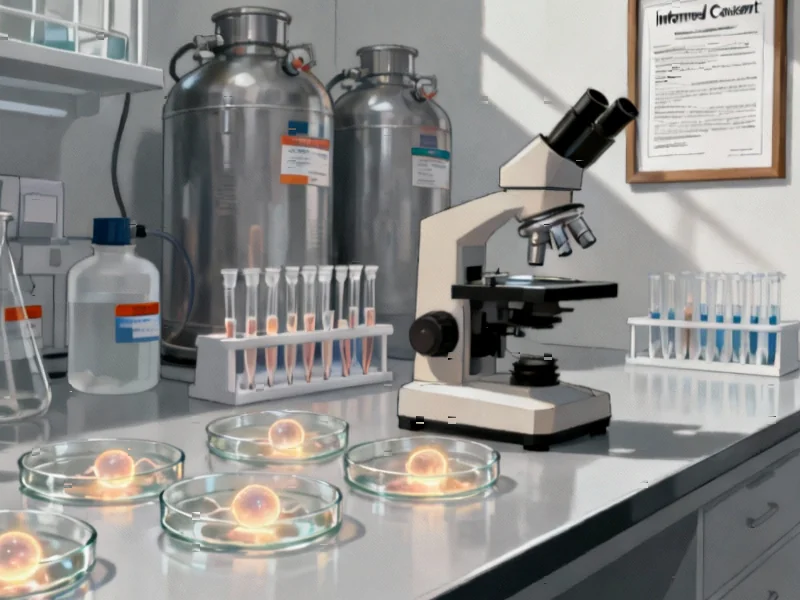According to Nature, Japan’s bioethics panel in August backed producing embryos from sperm and eggs derived from stem cells, anticipating formal approval for research that could eventually study these embryos for up to 14 days in laboratory settings. While not yet feasible with human cells, this approach could advance understanding of fertilization, improve assisted reproduction, and support genetic research. The decision highlights a growing gap between rapid technical advances and slower ethical deliberation, with ethicists urged to learn from the 2018 scandal involving genome-edited twin girls. This marks a potential turning point in how society perceives embryos, requiring broader public engagement beyond expert circles. This development demands immediate analysis of the governance challenges ahead.
Table of Contents
The Science Behind Stem Cell-Derived Gametes
The technology enabling this breakthrough builds on decades of embryo research and recent advances in induced pluripotent stem cells (iPSCs). Scientists can now reprogram adult cells into stem cells that theoretically can differentiate into sperm and egg cells, though the process remains technically challenging and inefficient. What makes Japan’s position particularly significant is that they’re preparing governance frameworks before the technology becomes fully operational with human cells—a rare instance of anticipatory bioethics in practice. The 14-day limit references the international consensus on embryo research, but stem cell-derived embryos raise new questions about whether existing frameworks apply when embryos don’t originate from traditional fertilization.
The Critical Governance Void
The most immediate concern isn’t the science itself but the regulatory vacuum it exposes. Current international guidelines were developed for traditional embryo research and assisted reproduction, not for embryos created from stem cell-derived sperm and eggs. This creates jurisdictional ambiguities—are these considered human embryos under existing laws? Different countries have wildly varying regulations, creating potential for “ethics tourism” where researchers seek jurisdictions with the most permissive frameworks. The reference to the 2018 CRISPR baby scandal underscores how individual researchers can exploit regulatory gaps, but the scale here could be much larger given the broader research community working in reproductive technologies.
The Inevitable Commercialization Pressures
Beyond the ethical considerations lie significant commercial incentives that could accelerate development faster than governance can respond. The global fertility market is projected to exceed $45 billion by 2028, creating powerful economic drivers for technologies that could overcome infertility. Pharmaceutical companies have vested interests in embryo models for drug testing, while biotech firms see potential in genetic research applications. This commercial landscape means that even if some countries establish strict regulations, researchers and companies will naturally migrate to more permissive environments—much like what occurred with stem cell research in the early 2000s.
Broader Societal Questions Beyond the Lab
This technology ultimately challenges fundamental concepts of parenthood, identity, and what it means to be human. Embryos created from stem cell-derived gametes could theoretically be generated from any cell in someone’s body, potentially allowing a single individual to create both sperm and egg cells. This raises unprecedented questions about reproduction and kinship that society has never confronted. The research institutions driving these advances have ethical responsibilities that extend beyond laboratory safety to considering how their work might reshape human relationships and social structures.
A Realistic Path for Responsible Innovation
The most effective approach would involve tiered governance that distinguishes between research embryos never intended for implantation and those with reproductive potential. International scientific bodies need to establish clear red lines—particularly regarding any attempts at implantation—while national regulators focus on oversight mechanisms that can evolve as the science progresses. Crucially, these discussions must extend beyond scientific and ethics committees to include diverse public perspectives, since these technologies ultimately challenge societal norms rather than just scientific boundaries. The goal shouldn’t be to stop progress but to ensure it proceeds with appropriate safeguards that maintain public trust.



